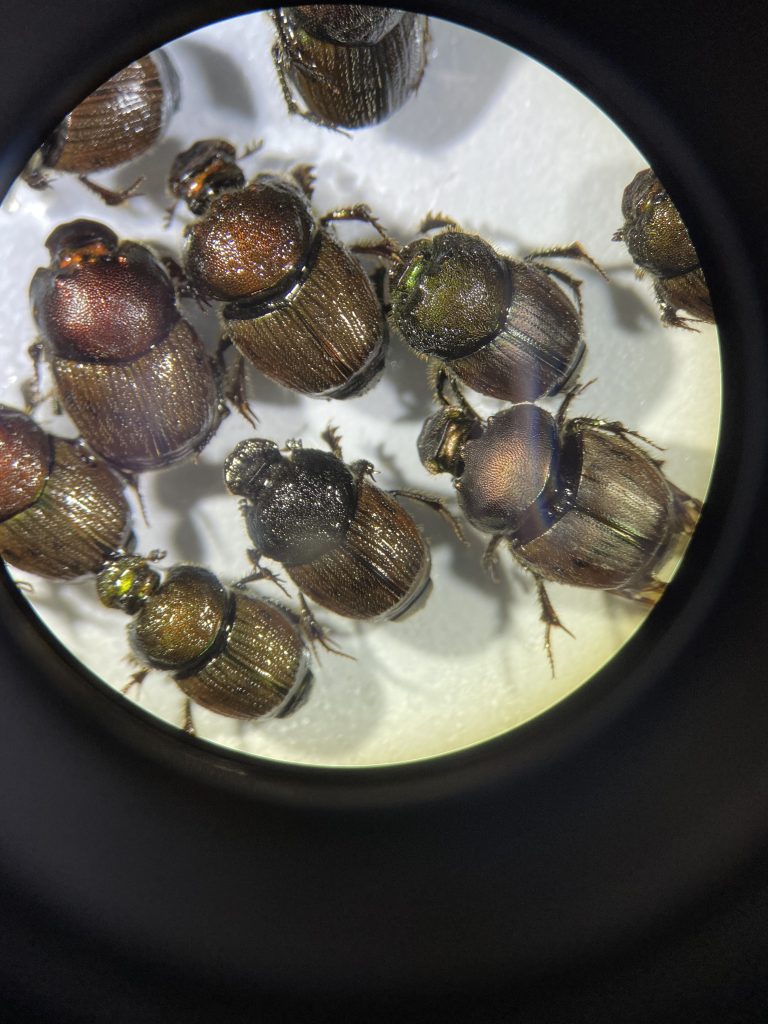
Arthropods (especially insects) are frequently used as indicators of habitat quality or food availability, particularly in the study of insectivorous species such as the Dupont’s lark. Within the framework of the LIFE Connect Ricotí project, processing arthropod samples in the laboratory, obtained through pitfall traps and sweep nets, is crucial for determining biomass and diversity values.
In this processing, there are two fundamental processes: i) weighing the samples; and ii) preparing for massive sequencing or metabarcoding analysis, which provides information on the taxonomic composition of the samples.
Both processes follow a strict protocol that ensures the homogeneity of the collected data and the absence of cross-contamination between samples.
Prior to the actual processing, it is necessary to remove plant elements, soil, or stones that may affect the weight. This is done in pre-sterilized laboratory trays on which the samples are individually poured, as seen in the image.
The subsequent weighing is done dry, extracting the alcohol that preserves the sample and recovering it for the subsequent preparation of the genetic sample. In this way, we obtain a homogeneous measure among samples in terms of humidity, following a widely used protocol where the amount of liquid retained at the time of weighing is the same among samples.

